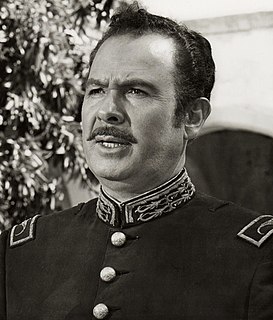A list of the films produced in the Cinema of Mexico ordered by year of release in the 1950s. For an alphabetical list of articles on Mexican films see Category:Mexican films.
A list of the films produced in the Cinema of Mexico ordered by year of release in the 1950s. For an alphabetical list of articles on Mexican films see Category:Mexican films.

Kim Stanley was an American actress, primarily in television and theatre, but with occasional film performances.

Mexican cinema dates to the late nineteenth century during the rule of President Porfirio Díaz. Seeing a demonstration of short films in 1896, Díaz immediately saw the importance of documenting his presidency in order to present an ideal image of it. With the outbreak of the Mexican Revolution in 1910, Mexican and foreign makers of silent films seized the opportunity to document its leaders and events. From 1915 onward, Mexican cinema focused on narrative film.
Doctor or The Doctor may refer to:
"La Bamba" is a Mexican folk song, originally from the state of Veracruz, best known from a 1958 adaptation by Ritchie Valens, a Top 40 hit in the U.S. charts. Valens's version is ranked number 345 on Rolling Stone magazine′s list of the 500 Greatest Songs of All Time. It is the only song on the list sung in a language other than English.

Silvia Verónica Pasquel Hidalgo, known professionally as Silvia Pinal, is a Mexican film, theater and television actress. Pinal began her career in the theater, venturing into cinema in 1949. Her film work and popularity in her native country led her to work in Europe. Pinal achieved international recognition by starring in a famous film trilogy by director Luis Buñuel: Viridiana (1961), El ángel exterminador (1962) and Simón del desierto (1965).

John Eliot Sturges was an American film director. His films include Bad Day at Black Rock (1955), Gunfight at the O.K. Corral (1957), The Magnificent Seven (1960), The Great Escape (1963), and Ice Station Zebra (1968). In 2013, The Magnificent Seven and 2018, Bad Day at Black Rock were selected for preservation in the United States National Film Registry by the Library of Congress as being "culturally, historically, or aesthetically significant". Although both he and fellow director Preston Sturges were from the Chicago area and shared the same last name, they had no known close relation to each other.

Pedro Gregorio Armendáriz Hastings was a Mexican film actor who made films in both Mexico and the United States. With Dolores del Río and María Félix, he was one of the best-known Latin American movie stars of the 1940s and 1950s.
This is an index of lists of films by year, awards, countries of origin and genre among other factors.

Benito Alfonso Bedoya y Díaz de Guzmán was a Mexican actor who frequently appeared in U.S. films. He is best known for his role in The Treasure of the Sierra Madre, where he played a bandit leader and delivered the "stinking badges" line, which has been called one of the greatest movie quotes in history by the American Film Institute.

José Pascual Antonio Aguilar Márquez Barraza was a Mexican singer, actor, songwriter, equestrian, film producer, and screenwriter with a dominating career in music. He recorded over 150 albums, which sold 25 million copies, and acted in more than 120 films. He was given the honorific nickname "El Charro de México" because he is credited with popularizing the Mexican equestrian sport la charrería to international audiences.

Classical Hollywood cinema is a term used in film criticism to describe both a narrative and visual style of filmmaking which became characteristic of American cinema between the 1910s and the 1960s. It eventually became the most powerful and pervasive style of filmmaking worldwide. Similar or associated terms include classical Hollywood narrative, the Golden Age of Hollywood, Old Hollywood, and classical continuity.
A list of the most notable films produced in the Cinema of Mexico split by decade of release. For an alphabetical list of articles on Mexican films see Category:Mexican films.
Roberto Gavaldón was a Mexican film director.

The Golden Age of Mexican cinema is a period in the history of the Cinema of Mexico between 1936 and 1956 when the Mexican film industry reached high levels of production, quality and economic success of its films, besides having gained recognition internationally.
Latin American cinema refers collectively to the film output and film industries of Latin America. Latin American film is both rich and diverse, but the main centers of production have been Argentina, Brazil and Mexico. Latin American cinema flourished after the introduction of sound, which added a linguistic barrier to the export of Hollywood film south of the border.
Borderline is a 1950 American crime film noir directed by William A. Seiter and starring Fred MacMurray and Claire Trevor. It was filmed from late May to early July 1949 at Republic Studios.
The Rumberas film was a film genre that flourished in Mexico, in the so-called Golden Age of Mexican cinema in the 1940s and 1950s. Its main stars were the so-called rumberas, dancers of Afro-Caribbean musical rhythms. The genre is a film curiosity, one of the most fascinating hybrids of the international cinema.

Guillermina Jiménez Chabolla, known professionally as Flor Silvestre, was a Mexican singer, actress, and equestrienne. She was one of the most prominent and successful performers of Mexican and Latin American music, and was a star of classic Mexican films during the Golden Age of Mexican cinema. Her more than 70-year career included stage productions, radio programs, records, films, television programs, comics, and rodeo shows.
The Empire Zinc strike, also known as the Salt of the Earth strike, was a 15-month-long miners' strike in New Mexico against the Empire Zinc Company for its discriminatory pay and housing practices. The strike drew national attention, and after it was settled in 1952, a movie entitled Salt of the Earth (1954) was released that offered a fictionalized version of events.